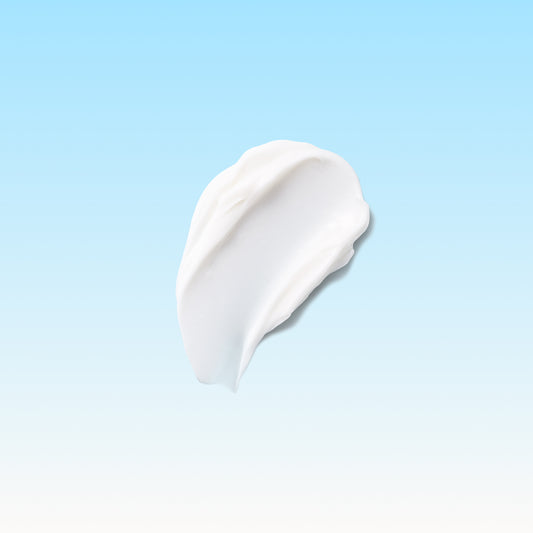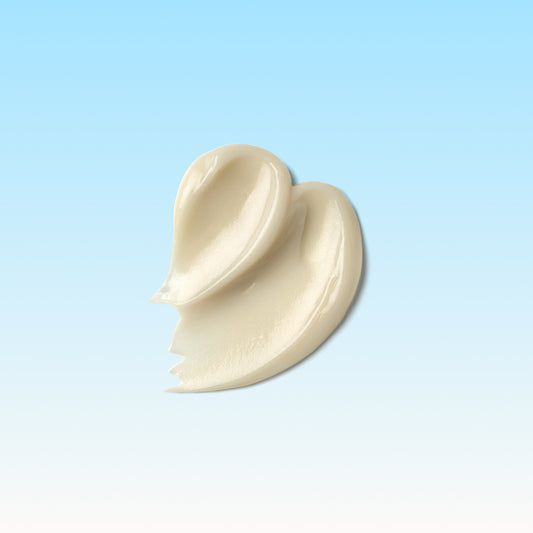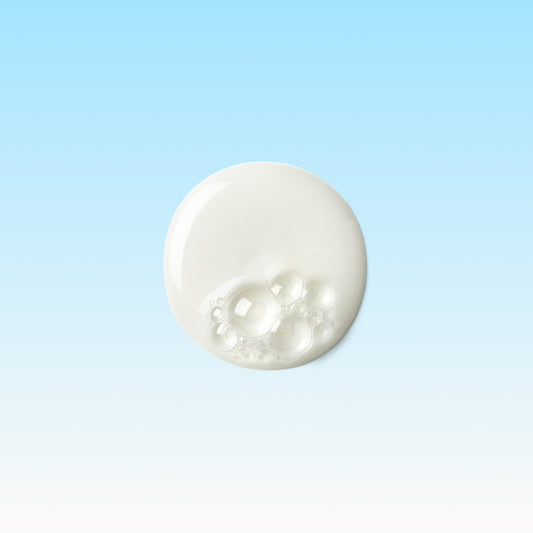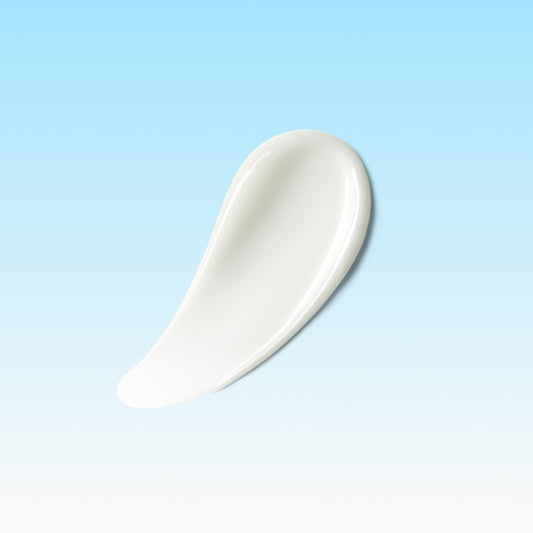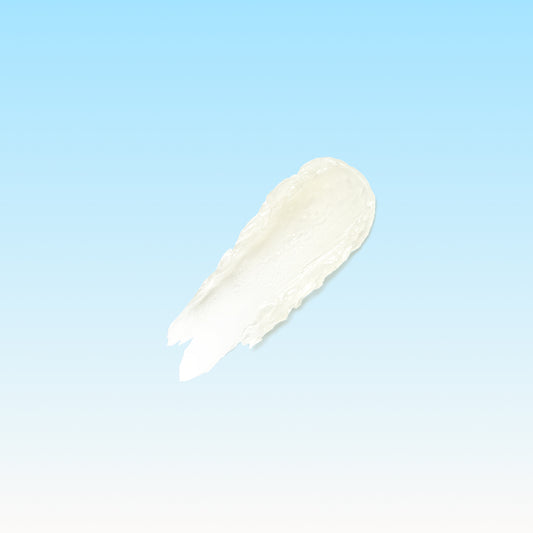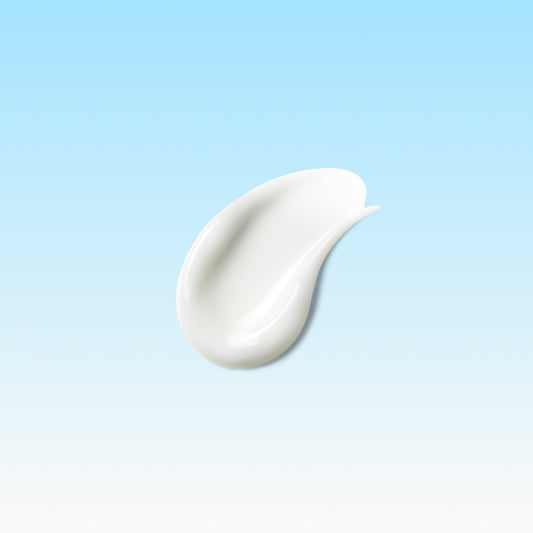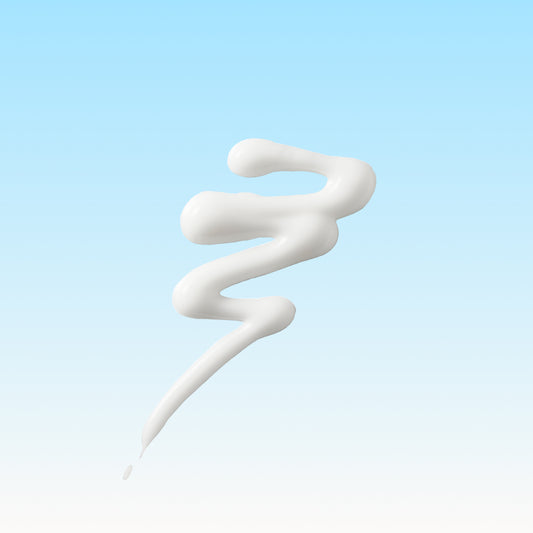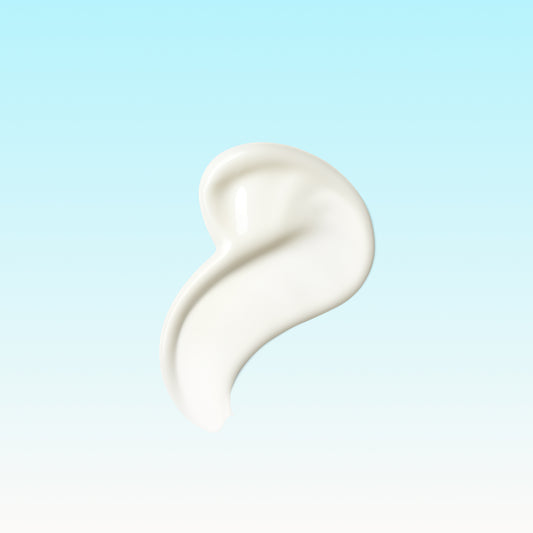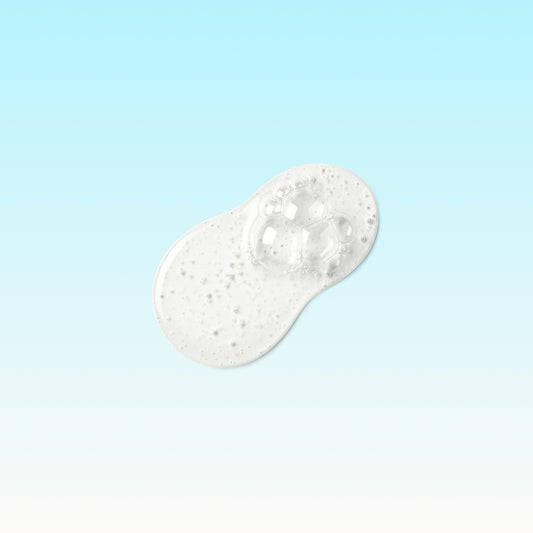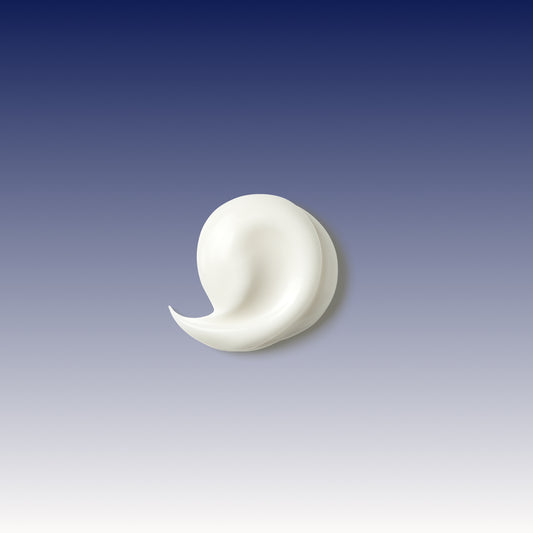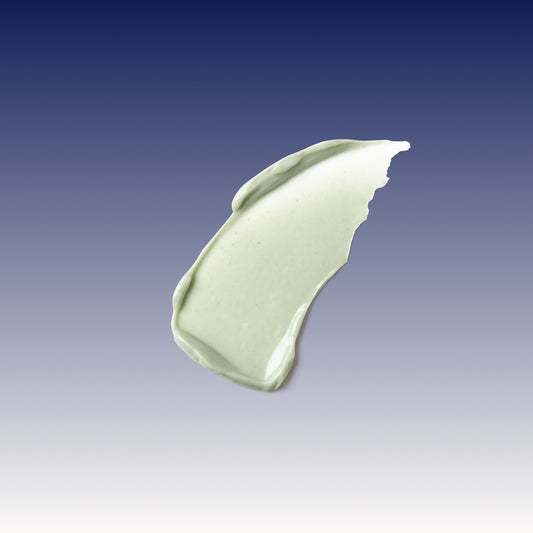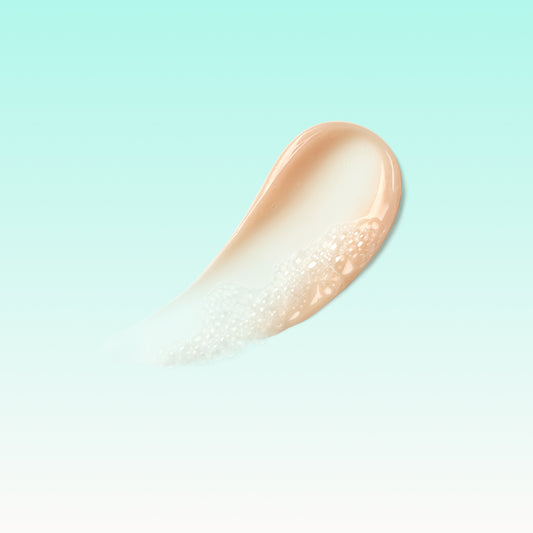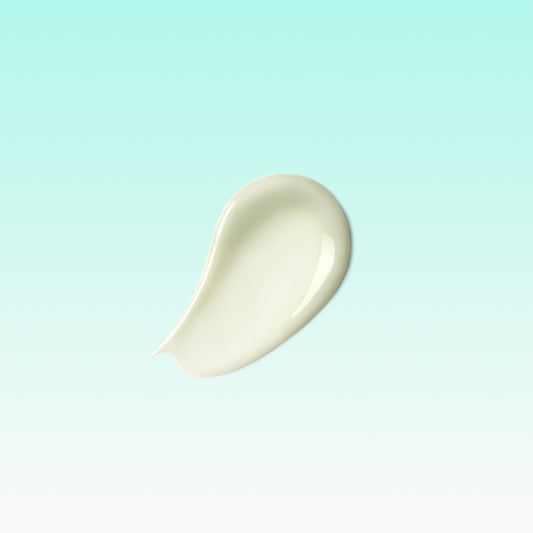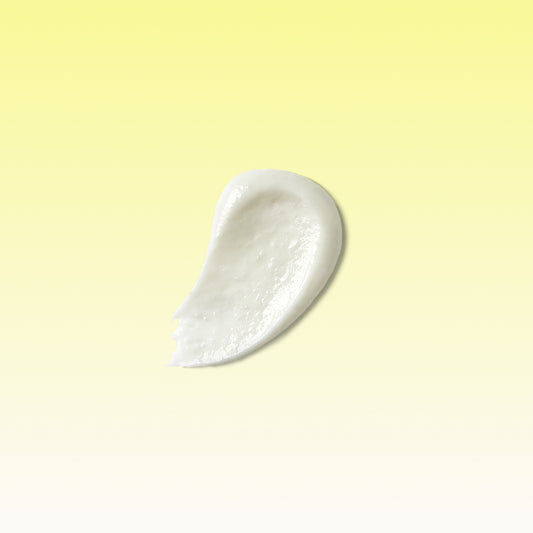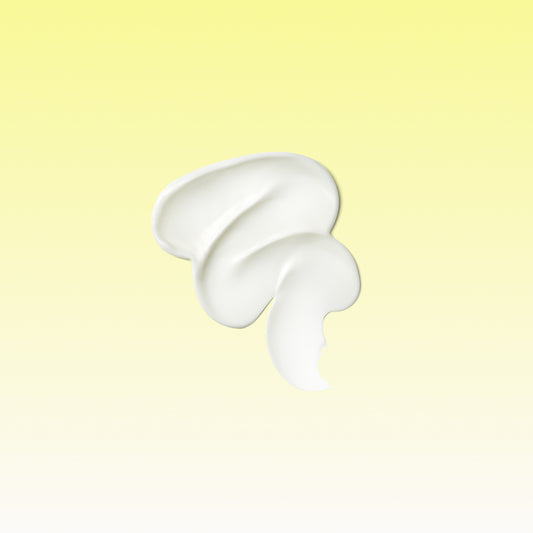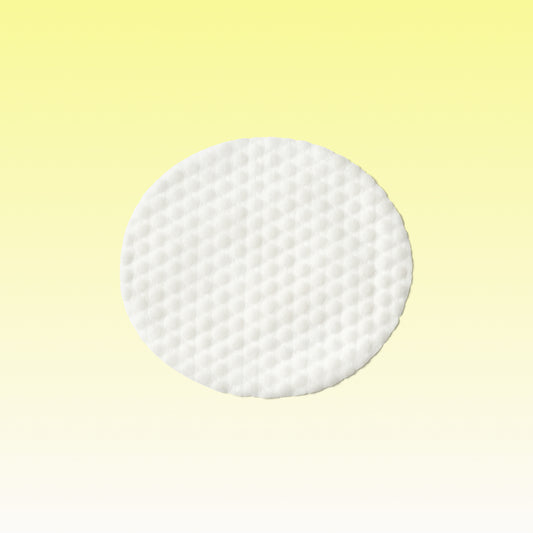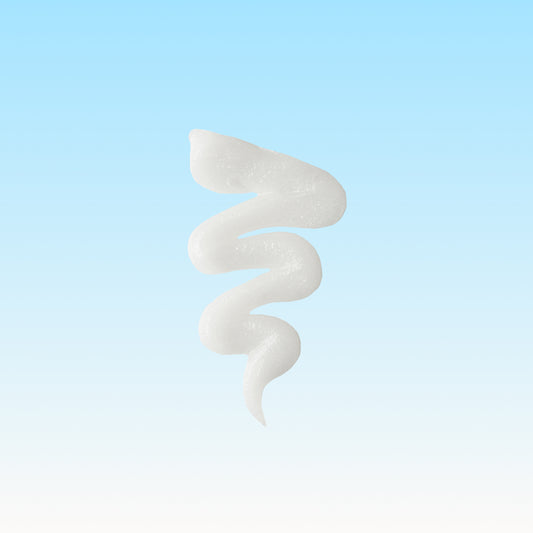S2:E1 A Deep Dive into Fungal Acne with Dr. Muneeb Shah
[Amy Gordinier] Total Skin Nerds is brought to you by Skinfix, we're clean, clinically active and on a mission to deliver healthy skin.
Welcome to Total Skin Nerds, I'm Amy Gordinier, founder of Skinfix. Total Skin Nerds is where I get to nerd out with some of the world's foremost experts in skin. We deep dive into issues related to skin disease, skincare ingredients, diet and lifestyle modifications to support skin health and even spiritual practices and their skin benefits. I'm so excited to kick off season two of the Total Skin Nerds podcast today with Dr. Dr. Muneeb Shah. Dr. Shah is a dermatology resident physician at Campbell University in North Carolina. Dr. Shah specializes in a broad range of dermatologic fields, including medical dermatology, cosmetic dermatology, procedural dermatology and mohs surgery. Notably he's focused on skin cancer prevention and improving quality of life for his patients. He's also a TikTok sensation, aiming to simplify skincare for all audiences while offering knowledge around how to use products and debunking skincare myths. I'm here to pick Dr. Shah's brain on a hot topic in dermatology and skin care today, yeast. And more specifically, a yeast infection on the skin called malassezia folliculitis.
Malassezia folliculitis is a relatively common skin condition in which hair follicles become inflamed. It is commonly known as fungal acne and occurs when the bacterial yeast creeps into the hair follicle, multiplies and causes an acne like rash on the surface of the skin. It's often a challenge to distinguish fungal acne from acne vulgaris or what we know to be common acne. I think you'll see that Dr. Shah is a fellow skin nerd in every respect, and you'll understand the reason why he's one of the most famous derms in social media. Before we dive in, I want to take a moment to thank everyone for listening to this podcast. The Skinfix team and I would love to hear more from you, please take a moment to leave us a review and let us know what you'd like to hear more of. We'd really appreciate it. Stay tuned skin nerds, this is going to be a fascinating conversation.
Welcome Dr. Shah. We are so excited to have you on Total Skin Nerds. This is the season opener for season two of the podcast.
[Dr. Muneeb Shah] I am excited to be here. I've actually been looking forward to doing this for a long time, because this is a really interesting topic we're talking about today.
[Amy Gordinier] We are. We are going to do a deep dive into yeast, basically, into malassezia folliculitis, which is a very hot topic and we want to really get the expert dermatologist opinion on what it is and how to treat it and what we need to know about it. I think before we start to dive into to malassezia folliculitis, I'd love to just understand a little bit about why medicine and why dermatology and kind of what brought you to this career.
[Dr. Muneeb Shah] Well it actually started from a love of science. I really, truly just love learning about science and how things work. When I find something that's very fascinating, the way that it comes together and then seeing how it plays out in real life, I really love that part of learning. And so I really enjoyed my biology courses, and because I like biology so much I felt like medicine would be a good fit. And I really didn't understand the human component of it, actually, probably until I started medical school, late in my medical school career, where I realized the impact of what we do and how it can affect people's lives. And so I actually pivoted, my focus is really a lot on research, on education, on putting together papers early on and just studying through my early medical career and then it transitioned more to educating people, treating patients and seeing them do better.
And so I pivoted in my career, I actually started in radiology, which is less patient focused, we look at images behind the computer and then we create a report that helps the clinicians make this decisions about the care of their patients. And then I started doing that and I realized that I loved biology and I loved the science, but to me it wasn't as meaningful unless I saw its impact on the patients and seeing them do better, and I actually switched from radiology to dermatology for that reason.
[Amy Gordinier] Amazing. Well, we're very happy you did. And we're very happy that you are an educating all of us, a lot of us about skin and skin care, and we're happy you made the pivot. So tell us a little bit about how you became the biggest social media dermatologist, you really kicked off derm talk. I mean, you are kind of the first, tell us how that journey began.
[Dr. Muneeb Shah] Yeah, well what I realized was that when I started medicine and then started dermatology, I started from a position of radiology and I didn't know anything about derm, and I didn't know anything about skincare and I wanted to know a lot about it, but I felt like the information out there was so complicated. And when I started to make videos, I saw that people had a lot of questions. Like, what's acne? How do I treat acne? How do you treat acne scars? What's dark spots? How do you treat them? And people had these questions, and I realized that I should answer them in the way that I would've needed that information when I started my dermatology or when I started learning about skincare, because it's just so complicated and overwhelming.
So I decided I would make videos that were just simple for people, because I think we take for granted... It's like when you play a sport and you're a baseball player, and it's hard to tell somebody how to swing a bat when you've been doing it your whole life and it's second nature to you. But if you're somebody who is just learning how to swing a bat, and then you just learned it recently, and you struggled through it, it didn't come natural to you, it's easy to explain what you did at that point.
And so for me, I was just trying to break things down to simple bite-size, snack-size amounts, because I know people's attention is short. I knew my audience that I was speaking to just wanted quick information that was meaningful and impactful, and so I just made very simple videos that kind of broke everything down to its very, very simplest form. And then it grew from there. And I just honestly grew it with the people on the platform. So people would leave me a comment, I would make a video based on that comment and I kind of grew with everybody as the skincare community grew. And my content has evolved since then, but I really started out just making simple content to help people and the common questions that they would leave on my videos.
[Amy Gordinier] It's really amazing, because as a brand, as Skinfix, we really struggled to understand how we would approach TikTok originally, because we thought, "Well, it's a lot of dancing and it's a lot of sort of humor, and can you really deliver scientific content or skincare information on TikTok?" And you came along and proved that in fact you could, and not only was there an appetite, but there was a way to deliver it in a format that was really digestible, but still really delivered important information. So you were very informative to us as a brand in terms of how to approach the platform, and we love to watch your journey and we love your content.
[Dr. Muneeb Shah] That's pretty interesting. I can't dance, so that's really the crux of it. So if I'm going to be on a dancing platform, I got to come up with something else that's going to be entertaining to of people. But I realized that in the same way that you could deliver a dance, you could deliver bite-size information that was interesting and entertaining. You can't deliver everything, that's the limit, right? So I can't tell you everything about fungal acne in 15 seconds, but I can give you enough information that I can guide you to the next step to maybe seek out more information or make a decision about your treatment. And so it's really, you got to be very selective about what information you deliver. But yeah, if I could dance, maybe I would never have become the derm doctor, who knows?
[Amy Gordinier] Well, we're happy you can't dance because we like the content you've created. And to your point, if people find something on TikTok and they get interested in it, it can then move to YouTube and get more information from you there, from you and Dr. Maxfield, so I think it's great how you layer the content. All right, let's talk about yeast. Let's talk about malassezia folliculitis aka fungal acne, which is not a medical term, apparently. And you could probably elaborate on that a bit, but what is malassezia folliculitis? It also has another name that I can't pronounce that starts with a P, that you could pronounce for me.
[Dr. Muneeb Shah] Pityrosporum folliculitis.
[Amy Gordinier] Pityrosporum, what is it?
[Dr. Muneeb Shah] Yeah, this is a good question. So interestingly, when I got on social media, fungal acne was all the rave. Everyone had fungal acne. Everyone was asking me questions about fungal acne. That's what prompted one of my first YouTube videos was because I felt like I needed to really deep dive into this topic. I do think, and I know we'll jump a little bit more into this, that it is underdiagnosed. But basically you have this yeast organism that lives on all of our skin and it basically doesn't do anything to most of us. So if I were to scrape the surface of your skin, my skin, anyone's skin, you're going to see this malassezia organism living there, and living there fine. And then in some people it gets into your pores, it seems to clog your poor and form things like pityrosporum folliculitis or malassezia folliculitis.
It causes other medical conditions too, tinea versicolor, which is a rash that usually is on the trunk, it can be dark or light colored, patchy spots. You can also get dandruff from malassezia organisms. So in some people it seems to cause disease states and in other people it just seems to live in harmony. But basically malassezia folliculitis or fungal acne is the form that causes little bumps on the skin, and it can be confused for regular acne.
Now, when I got on social media there was a lot of question about whether or not we should be using the term fungal acne. And I think this is an opinion, but I think it's completely okay to use this terminology with patients because we do this all the time to make things simplified or make them relatable. So we call atopic dermatitis, eczema, and that's widely accepted to be a term that we can use. And in a similar way, fungal acne, it's not technically acne, but is caused by a yeast or fungus organism and it can look and act and behave like acne. And so I think it's reasonable to call it fungal acne colloquially, and then use the term malassezia folliculitis when we write our papers and journals. But I actually have no problem with the terminology that's risen on social media.
[Amy Gordinier] Okay, great. Then we'll call it fungal acne, because it's a lot easier to pronounce. So how do you know you have fungal acne versus acne vulgaris or traditional acne?
[Dr. Muneeb Shah] Yeah, this one's tough. I mean even clinically when patients come into the office, it can be difficult to tell the difference. One thing I would say is that regular acne or acne vulgaris is just way more common. So if you were to be a guessing person and you weren't to see somebody at all and they told you they had little bumps on in the face, most likely it's going to be acne, and then the other option is malassezia folliculitis or fungal acne. Now the difference between them clinically is one, that fungal acne tends to be itchy, not in everybody, but in a lot of the patients, it can be itchy.
The distribution can be a little bit different, when I mean distribution, I mean where it is on face or on the body. So fungal acne tends to be on the forehead, on the trunk, the back, basically those areas that have a lot of oil glands and it tends to be near the hairline. And in young kids it tends to be more commonly on the face and in adults it tends to be more common on the body. But overall it's monomorphic, so that's a little bit different than a regular acne. Monomorphic meaning that all the bumps look similar rather than having one bump that's large and one bump that's small, they tend to all be the same size and shape. They tend to be flat, they're not as red or irritated as acne appears. They tend to be itchier and they tend to favor the forehead and the trunk. And so they're slightly different, but they can overlap quite a bit.
[Amy Gordinier] Are there certain circumstances, or genetic predispositions, or times of the year, or are there certain things that exacerbate it or that cause a higher level of incidence of fungal acne for one person versus another?
[Dr. Muneeb Shah] Yeah, there seems to be people that are just predisposed to fungal or yeast infections in general. And we see this in people, and when we don't really know why, they tend to get recurrent tinea versicolor on the chest, which is caused by the same organism or they tend to get recurrent fungal acne, or they have really bad seborrheic dermatitis or dandruff. And it just seems that their immune system is not able to keep this organism in check, so there is some predisposition to it.
The other thing is that we definitely know that in the summer months or in the higher humidity heat environments, it tends to flourish. And that's because the organism that causes it, which is a bunch of different species of the malassezia yeast, it tends to flourish in areas that are in temperatures that are warmer and it tends to not grow when it's colder. And so in colder climates, it doesn't seem to flourish as much. And so where I practice in North Carolina, we actually tend to get quite a bit of patients that actually do have fungal acne.
[Amy Gordinier] And would maskne have a connection to fungal acne given that you've got an exclusive mask, you're you're breathing, you've got moisture, did you see a higher incidence of fungal acne with mask wearing? Was there any connection?
[Dr. Muneeb Shah] Well, actually I haven't. So just because it tends to favor the areas like the forehead and the trunk and not necessarily the lower face where you tend to see more hormonal acne on the lower part of the face. I didn't really see an exacerbation of fungal acne during the mask wearing, but it would make sense that it could flourish in that environment because it's damp, hot, you're breathing into your mask and it would give you all of the elements that you would need to grow a fungal organism. We were seeing along the corners of the mouth quite a bit, something called perleche, or angular cheilitis, which can be caused by yeast organisms as well. And so not necessarily seeing a lot of fungal acne in that distribution, but we were seeing an exacerbation of organisms along the corners of the mouth.
[Amy Gordinier] And how much of a connection, in your mind or in your understanding is there between the gut and fungal acne in the skin? I mean, I think we know that, or we believe that there's obviously certain foods and certain things that can feed yeast in the gut, do we know enough about the connection between the gut and the skin to draw some sort of a connection between what we're eating and what's happening on the skin?
[Dr. Muneeb Shah] Probably not yet. I think that everything is connected, and for our us to say, there's no way anything you're eating is contributing to your regular acne, acne vulgaris, or fungal acne, I think that that would be pretty closed off to think that way. I think there's a lot... I mean, what you put in your body has a huge role on what you produce on the skin. And so we definitely know that there's a link, but we just don't know exactly what foods or things could trigger it. We do know that these organisms need fatty acids to survive. And so potentially, we don't know if you eat those foods whether or not it will actually end up on your skin and feed the organism. And so I would be more concerned about what we're putting on our skin than what we're putting in our bodies for fungal acne. And that's not because I don't think they're linked, I just don't think we have enough information to make a decision about what to limit in our diets.
[Amy Gordinier] Okay, perfect segue. So what do we put on our skin? How do you treat a patient that has fungal acne?
[Dr. Muneeb Shah] So first you've got to make the diagnosis of fungal acne. And when I see a patient, I'm asking them those questions. Is it itchy? And if they say itchy, I start to lean towards that fungal acne. If it's in a common distribution that I see fungal acne, I'll start to lean towards fungal acne. If they tell me they've been on acne treatment, traditional acne vulgaris treatment, your antibiotics, your retinoids, your salicylic acid, your benzoyl peroxide, and it's not getting better and it's still in that distribution that you see fungal acne, I start to lean more towards, okay, this may be fungal acne. That could even be exacerbated by your active treatments, because our skin is really a microbiome and it's a bunch of different organisms that live at harmony with each other. So you have mites, you have viruses, you have bacteria, you have yeast. And once you disrupt one of those things, it could allow another organism to overgrow. And so if you kill the bacteria on your skin with your traditional acne treatments, you could allow the fungus to grow.
And so when I have somebody on an acne treatment for a long time, particularly antibiotics, and they start to grow new bumps that look like fungal acne, then I start to get pretty suspicious of it. But the nice thing is that we can actually make the diagnosis with good certainty because you can actually unroof one these little bumps and actually look at it underneath the microscope and you would actually see these organisms, they look like spaghetti and meatballs underneath the microscope.
[Amy Gordinier] Yuck.
[Dr. Muneeb Shah] I know, I know, and you can actually make the diagnosis and say, "Okay, these bumps are actually filled with yeast and not bacteria." And so we can, if we're suspicious, we can just scrap it and look at it under what we call a potassium hydroxide or KOH prep, and actually make a diagnosis right there in clinic.
[Amy Gordinier] Okay, and so once you've diagnosed that it is in fact yeast, how do you tackle it and how is it different than what you would prescribe for acne vulgaris?
[Dr. Muneeb Shah] Well, I think principles wise, because we're learning more and more about fungal acne. I think about what causes these things to happen. One, you have an overgrowth of yeast. And so you can of course go after the yeast organism, but you also have, your skin cells are basically sticking together at the top surface of the skin too. So that problem is in regular acne and in fungal acne, where you actually have these basically closed bumps.
And so there's two ways that you can target this, one, you can go after the yeast. And so the things that I like for this are topical antifungals or ingredients that have antifungal properties. So over the counter things like zinc pyrithione, selenium sulfide, ketoconazole, and then prescription antifungal medications that you can either take by mouth, especially if it's a large area, it's just difficult to... Say I'm going to apply a cream over the entire chest, back, face, when you can just say, "Okay, maybe we'll give you a short course of oral medication that can work from the inside out." And so antifungals would be the treatment for that. You can also try to break up some of those closed bumps on the skin. And so things like salicylic acid or glycolic acid, or retinoids that help to kind of break up that cohesiveness of the cells would also compliment your antifungal treatments.
[Amy Gordinier] So is fungal acne, chronic? Is it something that you need to tackle daily with some... Do you need to use an antifungal and a keratolytic on a regular basis to keep it from recurring or do you treat it as and when it occurs?
[Dr. Muneeb Shah] That's a good question. So for most people that I see that come in with fungal acne, and I say I make the diagnosis of it, for those people I usually just treat them with one course of treatment and see how they do. Now in some people, and this is true for tinea versicolor, This is true for dandruff, this is true for seborrheic dermatitis. Some people, it is a chronic issue where their body is not able to get rid this yeast organism, it just overgrows, it gets into those pores and then it continues to create a malassezia folliculitis for them. And in those people, they may need to be on more of a longer course regimen.
And what that usually looks like to me is we treat them with a daily antifungal until we get it under control. And then I say, "Okay, once a week, what I want you to do is I want you to wash your face and your chest and back with an antifungal shampoo or body wash." And that way it keeps it from coming back, but we got the really bad part under control. And so it's not something where you're like, "Okay, I'm going to use this treatment every day forever, like I do in acne." But you want to just keep that yeast at bay, but you don't want to also at the same time, you need to be thoughtful about, okay, what am I doing that could potentially be making these things worse and try to avoid those things as well.
[Amy Gordinier] Are there any side effects or downsides to using an antifungal daily, like a ketoconazole, for instance, is there any chance of irritation? Is it something you only want to use once a week?
[Dr. Muneeb Shah] That's a good question. So if you look at the backs of the bottles it usually says use once or twice a week. We tell people to use it every day, at least initially, to get these things under control. So there's really no downside, other than these shampoos tend to have stronger surfactants in them that can be a little disruptive to the skin barrier, and they also tend to have fragrances in them that can be a little bit... So you don't want to use it as your daily face wash, just because it can be a little bit irritating to use these things every day. Not necessarily the ingredient ketoconazole, because ketoconazole actually has profound anti-inflammatory properties. In fact, it actually has benefit in hair growth as well because it has antiandrogen properties. So it really is an ingredient that's relatively safe.
Now taking an oral antifungal by mouth for a long extended period of time could definitely have some downs sides. The other thing is, and this is hard to quantify, would you become resistant to that antifungal with time? And that's something you'd have to consider is if we're using ketoconazole every day, is the malassezia on your skin eventually going to develop a resistance to it? And then you're going to have really bad, overwhelming yeast growth, and that's hard to know. And we don't see that very often, ketoconazole resistant malassezia, but it could happen. And that's why it's always good, even with dandruff to rotate your treatments for them. So you go from using ketoconazole as a treatment, and then you rotate to something like say zinc pyrithione, and then you go back to the ketoconazole, that way you're kind of tricking the yeast organism so that it never really catches onto your scheme.
[Amy Gordinier] So cool. I hadn't heard that before, but it makes so much sense. I didn't realize that fungi could become resistant in the same way that bacteria can become resistant. So you talked a little bit about, in the beginning of the show, about the fact that maybe fungal acne is underdiagnosed. Can you talk a little bit about kind of why you think that maybe it's more prevalent than is currently the data?
[Dr. Muneeb Shah] Well, I think one, we use more antibiotics for acne, we tend to get overgrowth of this malassezia organism. And so I think some of our treatments of acne could be exacerbating this. But I think the reason why it's probably underdiagnosed is, I don't know if you've ever... There's a couple sayings that we have in medicine, like one, to hammer everything as a nail, right? So if you always think something is going to be acne vulgaris, you're not often thinking about what else it could be. And the other thing is, there was a saying in radiology, and I wish it would spread throughout medicine, but it's basically that you look for what you know, and you see what you look for. So if you are aware of a condition, you're going to see it a lot more often. And then the third saying goes, if you're not seeing it, it's seeing you.
So there's these sort of anecdotes in medicine that you really need to be looking for "the zebras", even though it's not going to most likely be a zebra, it's most likely always going to be acne vulgaris, but at least it needs to always be on your mind that it could be fungal acne. And so I think the more that it's actually spread on social media, I think people are looking, more dermatologists are like, "Okay, maybe I need to be considering this higher on my differential." Especially in climates that are a little bit warmer. South, we tend to see a lot more of it and we have a higher suspicion of it. Where in the north, they don't see it as often, so they have a lower suspicion for it. And so I think, most likely it's going to acne vulgaris, but all the papers point towards the fact that it is quite underdiagnosed and it definitely should be on the differential for anybody who's providing dermatology care as an alternative diagnosis to regular acne.
[Amy Gordinier] Do you see instances where a patient has both? Where they live together in harmony or disharmony, dysbiosis, acne vulgaris and malassezia together? Is that something you see?
[Dr. Muneeb Shah] Yeah, you could see it. That would be bad luck. It would be hard to know, because you'd have a bunch of bumps and they would look quite similar, but you would probably end up treating one and seeing what's left over. So I would probably go after the most common and say, "Okay, let's start you on an acne regimen and see how you do." Now, there are some people that we start and we do find out they had both. And usually it's because we start an acne treatment and then they have a few bumps left over that look a lot more like fungal acne. And we say, "Okay, now we want you to add a ketoconazole into your routine."
And so we get the acne under control, because the acne is more likely to leave scarring too, so I do think that acne vulgaris is more appropriate to prioritize within this situation because the malassezia tends to be a little bit more superficial, it doesn't tend to create these deep cystic bumps that you see with acne vulgaris. And so I tend to go after the acne first and see what's left over and then attack it like that.
[Amy Gordinier] That makes sense. And is there a certain age group that's more prone? Is this something that happens later in life typically, or do you see it across all age groups?
[Dr. Muneeb Shah] We tend to see it in people that have oilier skin and we tend to see it in people that have younger skin, and that's because people with younger skin tend to be a little bit more oily as well. It's actually kind of interesting because the malassezia organism is not able to produce its own fatty acids that it needs to survive. And so it actually needs to break down oil that is within our sebaceous glands in order to survive. And so it produces something called lipase, which is an enzyme that breaks down the lipids that our skin produces, and then it feeds on those fatty acids to survive. And so it really needs to be in areas that have oil glands in order to live, because if it doesn't have oil, it can't live because it can't produce its own fatty acids. And so that's why we tend to see it in people that are younger that have more active oil glands than in people that are older.
[Amy Gordinier] So that is a perfect segue into topicals that you may be using in your skincare. I know this is sort of a controversial topic because the science is very light on the subject thus far. But what are your thoughts on this growing sort of concern that certain ingredients in skincare might potentially make malassezia worse? Do you think that if there's anything to that?
[Dr. Muneeb Shah] I think that there's always the need to do more scientific research. So I don't like the mentality, personally, I don't like the mentality that, "No, it can't be. No, no, no, it cannot be exacerbating these things." I'm always of the side that it could be, let's prove it. So I think it's reasonable to investigate these things, and I think that anecdote can be powerful. It can be powerful for consumers, I actually find that it's the most powerful thing that can push consumers. If I tell you this product has a lot of great ingredients and I have a lot of evidence, you may buy it. But if I tell you this is my favorite product of all time and it made my skin better, for some reason that holds a lot of weight. And so on the reverse side, if someone's saying this particular ingredient or this type of moisturizer made my fungal acne worse, and they have a lot of influence, it could be very convincing.
And so I think that anecdote is really a good segue into scientific research to say, okay, a lot of people are experiencing this with this, let's put it to the test and see what happens. And they have done sort of tests to see under which environments this malassezia organism can flourish. And so if you think about what ingredients to avoid, and this is all going to be sort of hypothetical, it would be any ingredient that's going to feed the yeast or any ingredient that's going to clog your pores because that's going to be the two main things that are going to contribute to fungal acne.
And so I think it's reasonable to think of these things. I think when you look at these fungal safe lists, you start to kind of worry yourself sick. And I think the same thing can happen with things that create regular acne or acne vulgaris, is it comedogenic? I think consumers, it's tough to say, "Okay, I'm going to avoid this, this, this, and this and all these products." And I think it would be better if brands said something like fungal acne safe, just like they say non-comedogenic and then you sort of have to take the trust that the brand is doing the search and looking for the ingredients to avoid and doing some testing to show that it's not making these things worse.
And so I think non-comedogenic, fungal acne safe are reasonable for the brands to try to do their due diligence. I think it would be very difficult for consumers to go through and say, "Okay, what ingredient do I avoid?" Because it all comes down to formulation. When you put these ingredients together, are they really bad once you get them in a formulation? One thing we do know to be bad for fungal acne is something like olive oil, because we used to grow, in order to actually culture malassezia in scientific studies, we used to put it on a plate with olive oil in order for it to grow, and so we do know that olive oil can exacerbate the yeast. And then we also know that there are new culture mediums that have come out that have actually even been more successful than fungal acne that contain other ingredients that could potentially make the malassezia yeast grow more.
[Amy Gordinier] Interesting. Well, I agree with you having just formulated some products that were malassezia safe, it is a very, very long list of ingredients and for a consumer to try to navigate that on their own, I think is challenging. And so I'm so happy to hear that you're open to this idea. I mean, our philosophy at Skinfix is when in doubt, leave it out. If we can formulate something that's very effective at treating acne vulgaris that also avoids this massively long list of ingredients that could potentially aggravate malassezia, why not? Is sort of our philosophy, but I'm happy that you're open to that idea. Because I know in the medical community there still isn't quite enough science to say something is officially fungal safe, but I certainly am happy that we're all moving in the direction of trying to figure it out. As it is complicated, our chemist was not happy when I produced the list of ingredients he was not allowed to use. It was very, very long.
Well that is super exciting. We have learned a ton about fungal acne, I really appreciate you doing this deep dive with us. And we have some questions actually that some of our consumers asked in advance of the podcast on social media that we'd love to ask you. One is also related to fungal acne, which is, how do you know the difference between keratosis pilaris and fungal acne? And how are they different in terms of the pathology?
[Dr. Muneeb Shah] That's a good question. So with keratosis pilaris, it tends to be something you've had forever, whereas fungal acne, it tends to just show up. So if you've had little bumps on your arms, the backs of your legs, sometimes on the face, forever, they're scaly, they're red, sometimes pigmented, and they've been there since you were a kid, it's probably going to be keratosis pilaris. Both can be itchy and keratosis pilaris doesn't affect the trunk, really doesn't affect the forehead as much, doesn't affect the back, the chest as much. And so when you see it just on the arms alone, it's been there forever, it's probably keratosis pilaris, extremely common, way more common than fungal acne. I don't know if there's population percentages, but I would say at least 30% of people have keratosis pilaris, and it's a long term condition that you'll sort of have forever and need to try to keep at bay. Some people outgrow it with age, but it tends to kind of progress into adulthood.
And then fungal acne tends to, like I said, favor the chest, the back, the forehead. It tends to be itchy, it tends to show up out of nowhere, it tends to have little bumps that are more like filled with stuff versus keratosis pilaris, which tends to be open and more scaly. So it tends to be a little bit different, similar treatments, they can both go after that scaliness to kind of break down or have those keratolytic properties like you mentioned. So things like salicylic acid, lactic acid, glycolic acid can do a good job of breaking down the scale in both conditions, but they tend to look a little different and they tend to act a little different.
[Amy Gordinier] And you had mentioned on one of your YouTube videos, I believe, or maybe at one of your TikTok videos that keratosis pilaris is almost more like eczema in that it's a dry skin condition, is it safe to say that fungal is an oily skin condition and keratosis pilaris is more of a dry skin condition, or is that an oversimplification?
[Dr. Muneeb Shah] That's actually a really good comparison. I think for most dermatologists it'd be easy to tell the difference between these two conditions, but you're exactly right in the sense that oily skin is definitely going to exacerbate fungal acne, whereas dry skin, and there's a big overlap between keratosis pilaris and eczema, and filaggrin mutations in general, which can contribute to eczema. It's definitely more of a dry skin condition, and moisturizing goes a really far away with this, whereas moisturizing doesn't do as much for fungal acne, because like you said, it's more of an oily skin condition.
[Amy Gordinier] Already got plenty of fatty acids, you don't necessarily need more. And in terms of eczema and psoriasis, there's been some sort of indication that there could be a yeast component to those concerns. How much do we know of about the role that yeast plays or malassezia plays in things like eczema and even psoriasis?
[Dr. Muneeb Shah] Well, we do know... So interesting thing about eczema is that we do know that there's a couple things that are happening. There's the genetic component, the barrier component, and then there's the what are you putting on your skin component or what's already on your skin component. And so malassezia can produce antigens or basically signals that hyperactivate the immune system against the skin and cause inflammation, and so it can definitely contribute. And we actually find that eczema tends to be a condition where you have a weakened immune response.
And this is actually how psoriasis and eczema are very different, where actually psoriasis tends to not get infected with things and eczema tends to get infected because you have weakened barrier and your immune system is not able to necessarily fight these things off. And so you tend to get a lot of bacterial infections in eczema. You tend to get a lot more fungal infections and viral with eczema, whereas in psoriasis plaques, they tend to not actually get infected. But there are some people that think that in psoriasis that the malassezia organism can trigger the immune system to produce more scale and plaques. I think the evidence there is sort of weak, but I do think antigens or these signals that are produced by the malassezia organism can contribute to immune response that can exacerbate both conditions.
[Amy Gordinier] In terms of the barrier, you talked about a weakened barrier in eczema, one of the questions we had from a consumer is, if I use products that help to improve the health of my skin barrier, could that help mitigate my eczema?
[Dr. Muneeb Shah] Yeah, and I love that question because that's the foundation of eczema in my mind, because I don't personally want people on long-term steroid treatments, long-term prescription anti-inflammatory agents. What I want is people to just have a healthy skin barrier, but we do need these other medications to get it under control. And so my program director, the guy who trains me, he has a saying that he says to patients with eczema is that, we use the steroids to put the fire out and then we use moisturizers to keep the wood wet. And so it is a foundation to treatment to use moisturizer an eczema.
So if you have really bad eczema, it's flaring up real bad, we get you on a topical antiinflammatory or a steroid, we get that fire out. And then you do the due diligence to moisturize every single time you get out of the shower with really good lipid based moisturizers that repair the skin barrier, keep the barrier strong, that way the wood stays wet, your skin doesn't flare again, and then you don't need to go back on steroids. And so anyone who has eczema, moisturizing is definitely going to be the foundation of your treatment.
[Amy Gordinier] I love that. Put the fire out, keep the wood wet. That's a great analogy. One other question, which I'm also very interested in because I have recently been diagnosed with rosacea is, the best skincare routine for rosacea? As I'm finding myself, it is a tricky one to treat.
[Dr. Muneeb Shah] Very tricky, very tricky. If you could, if Skinfix could come up with good rosacea treatments, it would be an absolute game changer for the industry because we really don't have anything that I find to be overwhelmingly good in the treatment of rosacea, nothing in my opinion is great over the counter specifically. So we do know things can make it worse. So we know that the sun can make it worse. We know alcohol can make it worse. We know that heat can make it worse. We know that actually, going back to the sun, it is actually instrumental in the development of these blood vessels that you see in rosacea. So wearing a really good a sunscreen every day is going to be really important to keeping rosacea from getting worse. Once it forms we need topical anti-inflammatories, there's not really a lot out there over the counter that can help.
Probably the thing with the most benefit would be azelaic acid, which has benefit in rosacea, and sulfur actually. So sulfur actually has benefit in both acne and rosacea and some people even call it acne rosacea or adult acne, because there's a lot of overlap between them. But those are probably the two ingredients I would look for, and just use gentle... I tell a lot of people with rosacea to treat their skin like it's sensitive, so just gentle, fragrance-free products that don't irritate the skin. So that's gentle cleanser, gentle moisturizer, good sunscreen and then the two actives I would look for are azelaic acid and sulfur.
And then when you see a dermatologist, we can use ingredients that we actually believe... So similar to fungal acne we have a yeast on our skin that goes awry, in rosacea we believe that the demodex mite actually goes awry in rosacea. And so we use a medication called ivermectin, which is an anti-mite cream and that anti-mite cream does have benefits for some people that have rosacea. And then we can also use other prescription medications like metronidazole and other things that can keep that inflammation under control. But over the counter, we really are limited with what we can do with rosacea. So if anyone comes out with a really good treatment, it would be an absolute game changer.
[Amy Gordinier] Okay, good to know. Well, we do have an overnight rosacea mask that we actually tested with Dr. Zoe Draelos, and it was published in the JDD, and I've been using it and it is great. During the day I do use a prescription topical that was prescribed to me by my derm, Dr. Ellen Marmur. But she said it's going to take months, and it is definitely taking months to get on top of it. And I have a new appreciation for the stubbornness of rosacea, so it's definitely a new focus area for Skinfix. We need more help, but she's also... My derm filled me in, I'd be curious to know your thoughts, to lay off the BHAs and the AHAs and any sort of exfoliant of any kind and just really be gentle and use, as you said, barrier replenishing products.
[Dr. Muneeb Shah] I absolutely, agree with that. And it's because, it's how far can you push it when you have rosacea? And I've had this conversation, I don't know if you know James Welsh well, but he's a YouTuber out of the UK and he has rosacea. And he found that even retinol tends to irritate his rosacea, and so it's really a lot of trial and error to see what irritates you. So some people with rosacea do well with retinol, other people don't. So it's going to be a lot of trial and error on your part, but I often tell people, like I said, to treat their skin like it's sensitive. So it's avoid those high strength exfoliants, avoid those beta hydroxy acids that could potentially exacerbate it, but some people can get away with those ingredients. You'd have to kind of trial and error to see how you do, but really you want to keep that barrier intact and use more calming ingredients.
[Amy Gordinier] Okay. Well, final question, just to sort of wrap, we'd love to know if you could give our listeners three skin fixes, what would be the three top recommendations you would have for a skincare routine?
[Dr. Muneeb Shah] Three things, okay. One, find out what your target areas and goals are, because I think that that's one thing a lot of people neglect in their skincare routine. They buy a lot of great products, but they don't have necessarily a great routine to target their issues. So you might hear retinol is great, but you have rosacea and it's not going to work well for you. So you have to say, "Okay, what are my main goals this next couple months?" And maybe it's fine lines and wrinkles, and then you build your actives based on that. And you ask yourself, "Are my actives treating my main goal of concern?"
And so one, find out what your goal of concern is. Two, figure out what actives you're going to use to treat that and be very deliberate with those things. And then three, I would say, keep it super simple because simple and steady, slow and steady wins the race in skin care. I mean, a lot of people think because I have thousands of skin care products, I have a very complicated routine. I'm never putting more than three or four things on my face in a day. And so really just keep things simple, just because the product is good doesn't mean it's good for you and just stay steady with it. If you're using ingredients that are deliberately targeting your specific skin issues and you have patience, it will get better with time. So it's just being very thoughtful about your skin care routine.
[Amy Gordinier] I love that. Thoughtful and patient, words to live by and skin care. Well, thank you, Dr. Shah, this has been such an incredible joy to speak to you. We really appreciate you taking the time on a Saturday to talk to Total Skin Nerds. We know how busy you are, love the work you're doing, just very grateful to have you on the show.
[Dr. Muneeb Shah] Thank you for having me, love Skinfix. I love how thoughtful you are about formulation, and really contributing to the research in dermatology. You don't have to do that as a brand, but you really do put the onus on the brand to really produce high quality research that supports your products, and so I really love that coming from someone who started out as a big biology nerd.
[Amy Gordinier] Thank you, Dr. Shah.
[Dr. Muneeb Shah] Thank you.
[Amy Gordinier] You can catch Dr. Shah's TikTok videos on his channel @dermdoctor, and check out his YouTube channel, Doctorly with Dr. Maxfield.
I want to thank Dr. Shah for nerding out with me and for continuing to educate and personalize the care of his patients. I had the pleasure of meeting Dr. Shah in New York last week for dinner. I will tell you his charisma, energy and intellect are truly impressive, but it's his passion for helping his patients and giving more people access to dermatological information via his social platforms that make him a truly standout physician and human.
Here are three things that really stood out for me in our conversation. One, I love Dr. Shah's focus on clinical research and education. He's a scientist, and the science truly matters to him. He's passionate about clinical proof, which is a passion that we share at Skinfix.
Two, I was really struck by Dr. Shah's comment about pursuing dermatology because of its real world impact on patients and the tangible results it bears out for him. Having met him, I can tell you his mission to help people is palpable.
And three, I think Dr. Shah did a fantastic job breaking down the pathology and symptomology of fungal acne and how to distinguish fungal acne from regular acne. Dr. Shah is truly a leader in dermatological education for the masses, and he helps us all to recognize what's going on with our skin so that we can seek out the right solutions to get our skin healthy.
Thank you for listening to this first episode of the second season of Total Skin Nerds. We'd love to hear from you and would be so grateful if you could take a moment to leave a review, and please subscribe to the show on Apple podcast and Spotify or wherever you listen to podcasts. Total Skin Nerds is produced by Rob [Corso 00:45:18], Casey [Cann 00:45:18] and Howie [Cann 00:45:19] for FreeTime Media. Our theme music is by John Palmer. A special thanks to Hope [Herre 00:45:26], Lauren Fonda, Amanda [Knappman 00:45:28], Megan Collins and Carmine [Montalto 00:45:31]. And I'm your host Amy Gordinier, till next time skin nerds.
Total Skin Nerds is a podcast created to educate. It is not a substitute for professional care by a doctor or other qualified medical professional. This podcast is provided on the understanding that it does not constitute medical advice. If you are looking for help with a skin concern, we would encourage you to seek the advice of a board certified dermatologist, functional medical practitioner or other qualified healthcare provider. You can find a registry of board certified dermatologists in the US at find-a-derm.aad.org and in Canada at dermatology.ca. For a registry of qualified functional medical practitioners you can visit ifm.org. Thank you so much for joining us on this episode, we hope that you enjoy listening to Total Skin Nerds as much as we enjoy making it.















